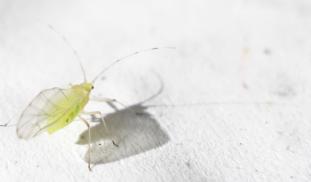Please wait...
About This Project
Ronin Institute
Long-distance electrical signals in plants are a key aspect of their physiology, but still remain a frontier in Biology. To understand this phenomenon, we need to make comparative studies that require data from several plant species. This project will contribute to understanding the diversity of long-distance electrical signalling in plants, while providing valuable information about the physiology of ferns.

Browse Other Projects on Experiment
Related Projects
How do polar bears stay healthy on the world's worst diet?
Polar bears survive almost entirely on seal fat. Yet unlike humans who eat high-fat diets, polar bears never...
Uncovering hidden insect diversity associated with a likely undescribed gall-forming midge
Does a likely undescribed species of gall-forming midge (pers. comm. Ray Gagné) on Eriodictyon plants (Yerba...
Macrofungi of the California archipelago
The eight islands of the California Archipelago are a well-studied biodiversity hotspot — but we know almost...


